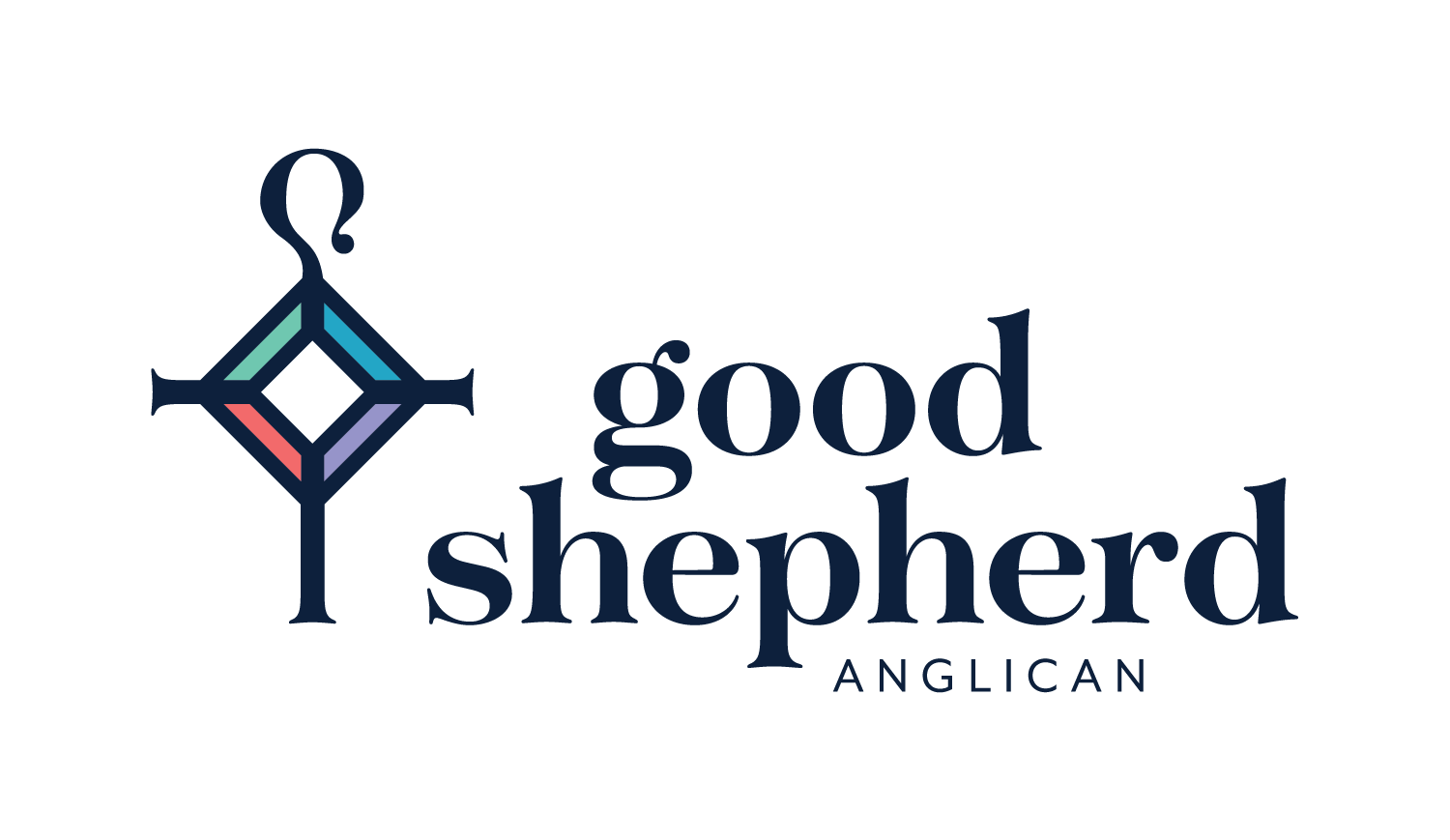Our Guiding Principles
Identity, Vision, & Values
IDENTITY
As a church…
Our name says it all. Good Shepherd. Using a metaphor that offends some and comforts many, Jesus claimed to be the good shepherd of the people of God. He said he was the one who lays down his life for his friends and that the reason he came was to give real and abundant life to humanity. In contrast to all others, Jesus insisted that he was the one and only Son of God, the savior of the world, the defender of humanity, and the sustainer of life itself. Our life together as a spiritual community is based on one simple truth: we believe him.
VISION
We are seeking and sharing life in Christ through ancient-future faith…
Because we believe him, we are learning to orient our entire lives around Jesus’ life and teachings and to help others do the same. Fortunately, we have the benefit of generations of Christians who have gone before us, people who have trusted Jesus faithfully and who have left a trail for us to follow. We’re attempting to lean into their wisdom and experience while adapting and applying it to our present and ever-changing circumstances.
VALUES
Developing a lifestyle marked by community, discipleship, mission, prayer, and worship.
We focus our efforts around five biblical values that, when embodied over a consistent period of time, shape our habits and become our way of life:
Community
We think of community as… the powerful witness of loving one another as Jesus has loved us.
We value it by… spending time together on Sunday mornings and throughout the week and by emphasizing authenticity, hospitality, reconciliation, and mutual support in countless practical forms.
Discipleship
We think of discipleship as… the life-long process of becoming like Christ.
We value it by… approaching everything we do as an opportunity to participate in the Spirit’s work of making us more like Jesus in our character, thoughts, words, and deeds. We encourage you to consider joining one of our Life Groups.
Mission
We think of mission as… the costly commitment of sharing the privileges of God’s kingdom with others.
We value it by… looking around at the world, imagining what it would look like if God were in charge of everything, and then doing what we can to make it more like that. Learn about the several missions we support in our community and abroad.
Prayer
We think of prayer as… the disciplined pursuit of connecting with God through unceasing conversation.
We value it by… inviting God into all aspects of our lives, speaking to Him in the way we would speak to our closest friend and then learning to hear His voice in return.
Worship
We think of worship as… the corporate experience of encountering the Lord in spirit and truth.
We value it by… prioritizing Sunday morning “church” and ordering the rhythms and routines of our lives around all that takes place there.
BELIEFS
We look to several ancient texts to inform our theology
We believe in one God, the Father, the Almighty, maker of heaven and earth, of all that is, visible and invisible.
We believe in one Lord, Jesus Christ, the only–begotten Son of God, eternally begotten of the Father, God from God, Light from Light, true God from true God, begotten, not made, of one Being with the Father; through him all things were made. For us and for our salvation he came down from heaven, was incarnate from the Holy Spirit and the Virgin Mary, and was made man. For our sake he was crucified under Pontius Pilate; he suffered death and was buried. On the third day he rose again in accordance with the Scriptures; he ascended into heaven and is seated at the right hand of the Father.
He will come again in glory to judge the living and the dead, and his kingdom will have no end.
We believe in the Holy Spirit, the Lord, the giver of life, who proceeds from the Father [and the Son], † who with the Father and the Son is worshiped and glorified, who has spoken through the prophets. We believe in one holy catholic and apostolic Church. We acknowledge one Baptism for the forgiveness of sins. We look for the resurrection of the dead, and the life of the world to come. Amen.
The sixty-six books of the Old and New Testaments are inspired by the Holy Spirit and authoritative for all Christians.
I. Of Faith in the Holy Trinity.
There is but one living and true God, everlasting, without body, parts, or passions; of infinite power, wisdom, and goodness; the Maker, and Preserver of all things both visible and invisible. And in unity of this Godhead there be three Persons, of one substance, power, and eternity; the Father, the Son, and the Holy Ghost.
II. Of the Word or Son of God, which was made very Man.
The Son, which is the Word of the Father, begotten from everlasting of the Father, the very and eternal God, and of one substance with the Father, took Man’s nature in the womb of the blessed Virgin, of her substance: so that two whole and perfect Natures, that is to say, the Godhead and Manhood, were joined together in one Person, never to be divided, whereof is one Christ, very God, and very Man; who truly suffered, was crucified, dead, and buried, to reconcile his Father to us, and to be a sacrifice, not only for original guilt, but also for actual sins of men
IV. Of the Resurrection of Christ.
Christ did truly rise again from death, and took again his body, with flesh, bones, and all things appertaining to the perfection of Man’s nature; wherewith he ascended into Heaven, and there sitteth, until he return to judge all Men at the last day.
V. Of the Holy Ghost.
The Holy Ghost, proceeding from the Father and the Son, is of one substance, majesty, and glory, with the Father and the Son, very and eternal God.
VI. Of the Sufficiency of the Holy Scriptures for Salvation.
Holy Scripture containeth all things necessary to salvation: so that whatsoever is not read therein, nor may be proved thereby, is not to be required of any man, that it should be believed as an article of the Faith, or be thought requisite or necessary to salvation… [Click here to keep reading]
In the name of God the Father, God the Son and God the Holy Spirit:
We, the participants in the Global Anglican Future Conference, have met in the land of Jesus’ birth. We express our loyalty as disciples to the King of kings, the Lord Jesus. We joyfully embrace his command to proclaim the reality of his kingdom which he first announced in this land. The gospel of the kingdom is the good news of salvation, liberation and transformation for all. In light of the above, we agree to chart a way forward together that promotes and protects the biblical gospel and mission to the world, solemnly declaring the following tenets of orthodoxy which underpin our Anglican identity… [Click here to keep reading]

Seasons of the Church Year
The rhythms of the liturgical calendar guide our weekly worship. Rooted in deep history and aligned with the global church, we look to the seasons of the church to guide us through important seasons.
Festival Days
White is the color that represents Festival days, such as Easter and Christmas.
Advent
Advent (from the Latin word adventus, which means “arrival” or “coming”) is the first season of the liturgical year. It begins four Sundays before Christmas and ends on Christmas Eve. This season is often marked by the Advent Wreath, a garland of evergreens with four candles. Blue is the color associated with this season.
Lent
Lent is a the season of preparation for Easter. It begins on Ash Wednesday and lasts for forty days. Lent is a time of somber reflection, remembering the great sacrifice that was made on our behalf. The six Sundays that fall within Lent are not counted during the fast, as they are “feast days.” Purple signifies lent in our liturgy.
Pentecost
Pentecost is the fiftieth and last day of the Easter season. It celebrates the sending of the Holy Spirit to the Apostles, which traditionally marks the birth of the Church, see also Apostolic Age. Red is the color associated with Pentecost, alluding to the fire that was present on the original day of Pentecost.
Growth
“Ordinary Time” or Growth Seasons are the days that fall outside of festival days or designated seasons in our calendar. It comprises two periods: the first period begins on Epiphany Day and ends on the day before Ash Wednesday; the second period begins at the end of Easter season, and continues until Advent. Green is associated with these days.
